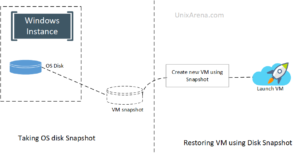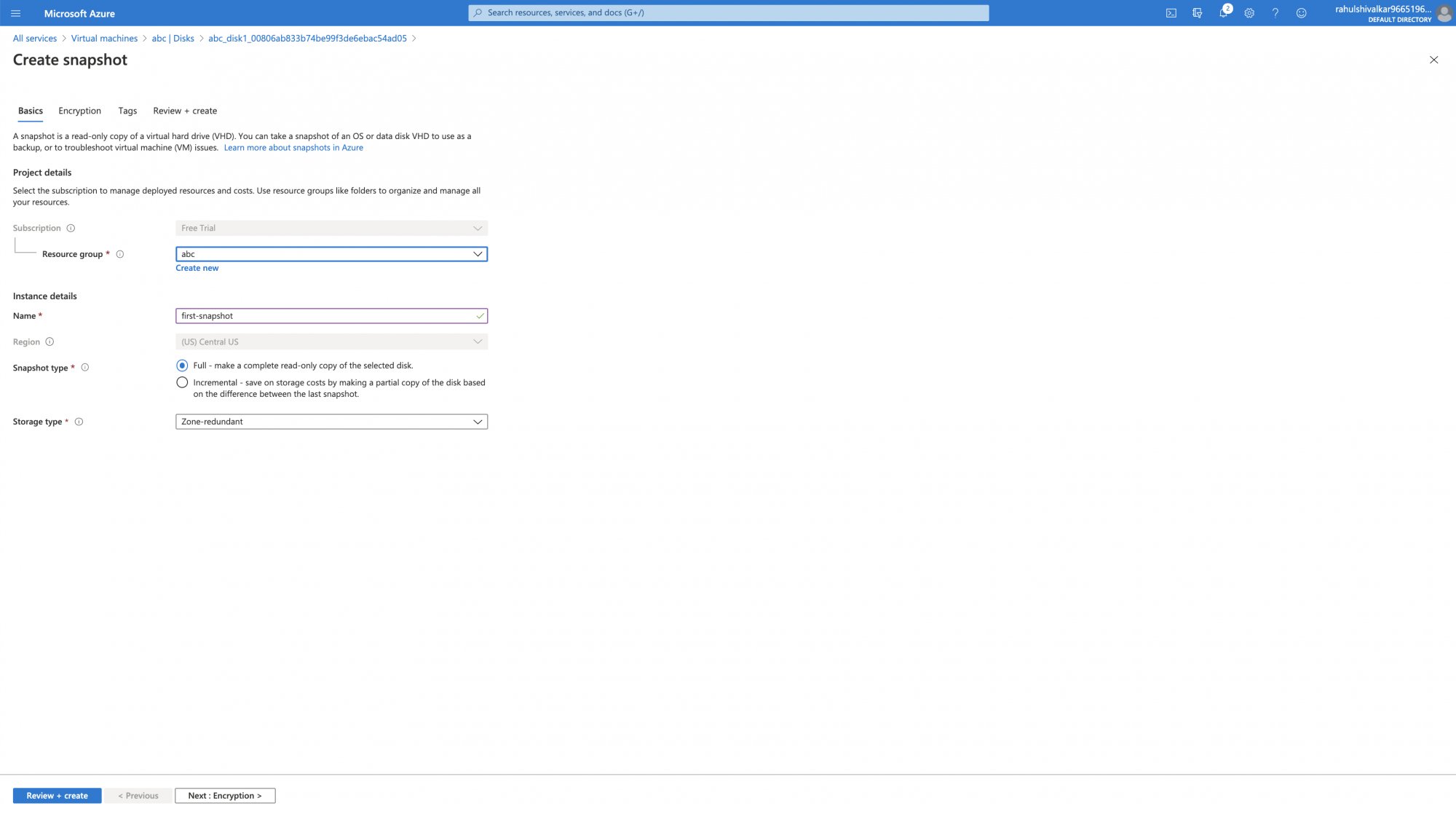

Id : /subscriptions/xxxx-xxx-xxxxxxxxx/resourceGroups/tamops-snapshots/providers/Microsoft. If you ran the above script, you will have three snapshots as below Write-Output "VM $($vm.name) Data Disk Snapshots End" Write-Output "VM $($vm.name) data Disk $($datadisk.Name) Snapshot End" New-AzSnapshot -ResourceGroupName $VmResourceGroup -SnapshotName $snapshotNameData -Snapshot $DataDiskSnapshotConfig -ErrorAction Stop $snapshotNameData = "$($datadisk.name)_snapshot_$(Get-Date -Format ddMMyy)" $DataDiskSnapshotConfig = New-AzSnapshotConfig -SourceUri $dataDisk.Id -CreateOption Copy -Location eastus Write-Output "VM $($vm.name) data Disk $($datadisk.Name) Snapshot Begin" $dataDisk = Get-AzDisk -ResourceGroupName $vm.ResourceGroupName -DiskName $datadisk $dataDisks = ($snapshotdisk.DataDisks).name Write-Output "VM $($vm.name) Data Disk Snapshots Begin" Write-Output "VM $($vm.name) OS Disk Snapshot End"

New-AzSnapshot -ResourceGroupName $VmResourceGroup -SnapshotName $snapshotNameOS -Snapshot $OSDiskSnapshotConfig -ErrorAction Stop $snapshotNameOS = "$($)_snapshot_$(Get-Date -Format ddMMyy)" $OSDiskSnapshotConfig = New-AzSnapshotConfig -SourceUri $ -CreateOption Copy -Location eastus -OsType Windows Write-Output "VM $($vm.name) OS Disk Snapshot Begin" $vm = get-azvm -Name $VmName -ResourceGroupName $VmResourceGroup VM tamops-vm data Disk datadisk2 Snapshot End Id : /subscriptions/xxxx-xxx-xxxxxxxxx/resourceGroups/tamops-snapshots/providers/Microsoft.Compute/snapshots/datadisk2_s VM tamops-vm data Disk datadisk2 Snapshot Begin VM tamops-vm data Disk datadisk1 Snapshot End Id : /subscriptions/xxxx-xxx-xxxxxxxxx/resourceGroups/tamops-snapshots/providers/Microsoft.Compute/snapshots/datadisk1_s Sku : .Models.SnapshotSkuĬreationData : .Models.CreationData After that, everyone who knows the SAS URI can download the disk without any IP filtering before the expiration time.VM tamops-vm data Disk datadisk1 Snapshot Begin In Azure, snapshots are stored as page blobs in a storage account, and you are charged for the amount of storage used by the snapshots, as well as any additional features or services you may use, such as data transfer, data management, and data retrieval. When the URI is generated, you need to define an expiration time (maximum expiration time 4294967295 seconds). You can generate a time bound Shared Access Signature (SAS) URI for unattached managed disks and snapshots for exporting the data to other region for regional expansion, disaster recovery and to read the data for forensic analysis. By default, in Azure all the Azure Disks are configured with a public endpoint enabled. In this article, I will show you how a malicious actor can leverage the Azure Managed Disk Import / Export feature to exfiltrate data outside of your organization.


 0 kommentar(er)
0 kommentar(er)
